Mirror therapy for improving motor function after stroke
- PMID: 29993119
- PMCID: PMC6513639
- DOI: 10.1002/14651858.CD008449.pub3
Mirror therapy for improving motor function after stroke
Abstract
Background: Mirror therapy is used to improve motor function after stroke. During mirror therapy, a mirror is placed in the person's midsagittal plane, thus reflecting movements of the non-paretic side as if it were the affected side.
Objectives: To summarise the effectiveness of mirror therapy compared with no treatment, placebo or sham therapy, or other treatments for improving motor function and motor impairment after stroke. We also aimed to assess the effects of mirror therapy on activities of daily living, pain, and visuospatial neglect.
Search methods: We searched the Cochrane Stroke Group's Trials Register, the Cochrane Central Register of Controlled Trials (CENTRAL), MEDLINE, Embase, CINAHL, AMED, PsycINFO and PEDro (last searched 16 August 2017). We also handsearched relevant conference proceedings, trials and research registers, checked reference lists, and contacted trialists, researchers and experts in our field of study.
Selection criteria: We included randomised controlled trials (RCTs) and randomised cross-over trials comparing mirror therapy with any control intervention for people after stroke.
Data collection and analysis: Two review authors independently selected trials based on the inclusion criteria, documented the methodological quality, assessed risks of bias in the included studies, and extracted data. We assessed the quality of the evidence using the GRADE approach. We analysed the results as standardised mean differences (SMDs) or mean differences (MDs) for continuous variables, and as odds ratios (ORs) for dichotomous variables.
Main results: We included 62 studies with a total of 1982 participants that compared mirror therapy with other interventions. Of these, 57 were randomised controlled trials and five randomised cross-over trials. Participants had a mean age of 59 years (30 to 73 years). Mirror therapy was provided three to seven times a week, between 15 and 60 minutes for each session for two to eight weeks (on average five times a week, 30 minutes a session for four weeks).When compared with all other interventions, we found moderate-quality evidence that mirror therapy has a significant positive effect on motor function (SMD 0.47, 95% CI 0.27 to 0.67; 1173 participants; 36 studies) and motor impairment (SMD 0.49, 95% CI 0.32 to 0.66; 1292 participants; 39 studies). However, effects on motor function are influenced by the type of control intervention. Additionally, based on moderate-quality evidence, mirror therapy may improve activities of daily living (SMD 0.48, 95% CI 0.30 to 0.65; 622 participants; 19 studies). We found low-quality evidence for a significant positive effect on pain (SMD -0.89, 95% CI -1.67 to -0.11; 248 participants; 6 studies) and no clear effect for improving visuospatial neglect (SMD 1.06, 95% CI -0.10 to 2.23; 175 participants; 5 studies). No adverse effects were reported.
Authors' conclusions: The results indicate evidence for the effectiveness of mirror therapy for improving upper extremity motor function, motor impairment, activities of daily living, and pain, at least as an adjunct to conventional rehabilitation for people after stroke. Major limitations are small sample sizes and lack of reporting of methodological details, resulting in uncertain evidence quality.
Conflict of interest statement
Holm Thieme (HT) is an author of an included study on the effect of mirror therapy after stroke. He was not involved in checking this trial for eligibility, extracting data or assessing the methodological quality of this study. He has received and will receive honorarium for presentations and seminars on mirror therapy.
Christian Dohle (CD) is author of two included studies on the effect of mirror therapy after stroke. He was not involved in checking these trials for eligibility, extracting data or assessing the methodological quality of the studies. He has received and will receive honorarium for presentations and seminars on mirror therapy.
Christian Dohle (CD) and Nadine Morkisch (NM) are authors of corresponding therapy manuals (Bieniok 2011; Morkisch 2015).
Jan Mehrholz: None known
Marcus Pohl: Marcus Pohl (MP) is an author of an included study on the effect of mirror therapy after stroke. He was not involved in checking this trial for eligibility, extracting data or assessing the methodological quality of this study.
Johann Behrens: Johann Begrens (JB) is an author of an included study on the effect of mirror therapy after stroke. He was not involved in checking this trial for eligibility, extracting data or assessing the methodological quality of this study.
Bernhard Borgetto: None known
Figures
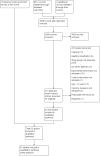


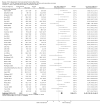






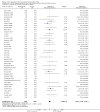
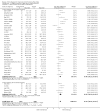
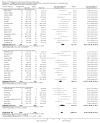
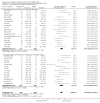

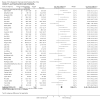

Update of
-
Mirror therapy for improving motor function after stroke.Cochrane Database Syst Rev. 2012 Mar 14;2012(3):CD008449. doi: 10.1002/14651858.CD008449.pub2. Cochrane Database Syst Rev. 2012. Update in: Cochrane Database Syst Rev. 2018 Jul 11;7:CD008449. doi: 10.1002/14651858.CD008449.pub3. PMID: 22419334 Free PMC article. Updated.
References
References to studies included in this review
Acerra 2007 {unpublished data only}
-
- Acerra NE. Is early post‐stroke upper limb mirror therapy associated with improved sensation and motor recovery? A randomised‐controlled trial [PhD thesis]. Sensorimotor Dysfunction in CRPS1 and Stroke: Characteristics, Prediction and Intervention. Brisbane, Australia: University of Queensland, 2007.
Alibakhshi 2016 {published data only}
-
- Alibakhshi H, Samaei A, Khalili MA, Siminghalam M. A comparative study on the effects of mirror therapy and bilateral arm training on hand function of chronic hemiparetic patients. Koomesh Journal of Semnan University of Medical Sciences 2016;17(3):589‐95.
Altschuler 1999 {published data only}
-
- Altschuler EL, Wisdom SB, Stone L, Foster C, Galasko D, Llewellyn DM, et al. Rehabilitation of hemiparesis after stroke with a mirror. Lancet 1999;353(9169):2035‐6. [PUBMED: 10376620] - PubMed
Amasyali 2016 {published data only}
-
- Amasyali SY, Yaliman A. Comparison of the effects of mirror therapy and electromyography‐triggered neuromuscular stimulation on hand functions in stroke patients [Inmeli Hastalarda Ayna Tedavisi ile Elektromyografik Elektrostimulasyonun El Fonksiyonlari Uzerine Olan Etkilerinin Karsilastirilmasi]. International Journal of Rehabilitation Research 2016;39(4):302‐7. - PubMed
Arya 2015 {published data only}
-
- Arya KN, Pandian S, Kumar D, Puri V. Task‐based mirror therapy augmenting motor recovery in poststroke hemiparesis: a randomized controlled trial. Journal of Stroke and Cerebrovascular Diseases 2015;24(8):1738‐48. - PubMed
Arya 2017 {published and unpublished data}
-
- Arya KN, Pandian S, Kumar V. Effect of activity‐based mirror therapy on lower limb motor‐recovery and gait in stroke: a randomized controlled trial. Neuropsychological Rehabilitation 2017;27:1‐18. - PubMed
Bae 2012 {published data only}
-
- Bae SH, Jeong WS, Kim KY. Effects of mirror therapy on subacute stroke patients' brain waves and upper extremity functions. Journal of Physical Therapy Science 2012;24(11):1119‐22.
Bahrami 2013 {published data only}
-
- Bahrami M, Mazloom, Hasanzadeh F, Ghandehari K. The effect of mirror therapy on self care of patients with stroke. Journal of Mazandaran University of Medical Sciences 2013;23(107):84‐95.
Cacchio 2009a {published and unpublished data}
-
- Cacchio A, Blasis E, Blasis V, Santilli V, Spacca G. Mirror therapy in complex regional pain syndrome type 1 of the upper limb in stroke patients. Neurorehabilitation and Neural Repair 2009;23(8):792‐9. [PUBMED: 19465507] - PubMed
Cacchio 2009b {published and unpublished data}
-
- Cacchio A, Blasis E, Necozione S, Orio F, Santilli V. Mirror therapy for chronic complex regional pain syndrome type 1 and stroke. New England Journal of Medicine 2009; Vol. 361, issue 6:634‐6. [PUBMED: 19657134] - PubMed
Cha 2015 {published data only}
-
- Cha H‐G, Kim M‐K. Therapeutic efficacy of low frequency transcranial magnetic stimulation in conjunction with mirror therapy for sub‐acute stroke patients. Journal of Magnetics 2015;20(1):52‐6.
Cho 2015 {published data only}
Colomer 2016 {published data only}
-
- Colomer C, Noé E, Llorens R. Mirror therapy in chronic stroke survivors with severely impaired upper limb function: a randomized controlled trial. European Journal of Physical and Rehabilitation Medicine 2016;52(3):271‐8. - PubMed
Dalla Libera 2015 {published data only}
-
- Dalla Libera D, Regazzi S, Fasoletti C, Dinacci Ruggieri D, Rossi P. Beneficial effect of transcranic magnetic stimulation combined with mirror therapy in stroke patients: a pilot study in neurorehabilitative setting. Brain Stimulation 2015;8(2):377.
Dohle 2009 {published and unpublished data}
-
- Dohle C, Pullen J, Nakaten A, Kust J, Rietz C, Karbe H. Mirror therapy promotes recovery from severe hemiparesis: a randomized controlled trial. Neurorehabilitation and Neural Repair 2009;23(3):209‐17. [PUBMED: 19074686] - PubMed
Geller 2016 {published data only}
-
- Geller D, Nilsen D, Lew S, Gillen G, Bernardo M. Home mirror therapy: a randomized controlled pilot study comparing unimanual and bimanual mirror therapy for improved upper limb function post‐stroke. Archives of Physical Medicine and Rehabilitation 2016;97:e4. [DOI: 10.1016/j.apmr.2016.08.008] - DOI - PubMed
Gurbuz 2016 {published data only}
Hiragami 2012 {published data only}
-
- Hiragami SY, Sato Y, Harada K, Kagawa K. The effect of mirror therapy on finger motor dysfunction after stroke. Journal of Japanese Society of Physical Therapy 2012;39(5):330‐7.
In 2012 {published data only}
-
- In TS, Jung KS, Lee WL, Song CH. Virtual reality reflection therapy improves motor recovery and motor function in the upper extremities of people with chronic stroke. Journal of Physical Therapy Science 2012;24(4):339‐43.
In 2016 {published data only}
Invernizzi 2013 {published data only}
-
- Invernizzi M, Negrini S, Carda S, Lanzotti L, Cisari C, Baricich A. The value of adding mirror therapy for upper limb motor recovery of subacute stroke patients: a randomized controlled trial. European Journal of Physical and Rehabilitation Medicine 2013;49(3):311‐7. - PubMed
Ji 2014a {published data only}
-
- Ji S‐G, Cha H‐G, Kim M‐K. Stroke recovery can be enhanced by using repetitive transcranial magnetic stimulation combined with mirror therapy. Journal of Magnetics 2014;19(1):28‐31.
Kawakami 2015 {published data only}
Kim 2014 {published data only}
-
- Kim H, Lee G, Song C. Effect of functional electrical stimulation with mirror therapy on upper extremity motor function in poststroke patients. Journal of Stroke and Cerebrovascular Diseases 2014;23(4):655‐61. [PUBMED: 23867040] - PubMed
Kim 2015a {published data only}
-
- Kim JH, Lee BH. Mirror therapy combined with biofeedback functional electrical stimulation for motor recovery of upper extremities after stroke: a pilot randomized controlled trial. Occupational Therapy International 2015;22(2):51‐60. - PubMed
Kim 2016 {published data only}
Kojima 2014 {published data only}
-
- Kojima K, Ikuno K, Morii Y, Tokuhisa K, Morimoto S, Shomoto K. Feasibility study of a combined treatment of electromyography‐triggered neuromuscular stimulation and mirror therapy in stroke patients: a randomized crossover trial. Neurorehabilitation 2014;34(2):235‐44. - PubMed
Kumar 2013 {unpublished data only}
-
- Kumar PV. Effect of functional electrical stimulation with mirror therapy on upper extremity motor function in poststroke patients [PhD thesis]. Karnataka, Bangalore, India: Rajiv Gandhi University of Health Sciences, 2013.
Kuzgun 2012 {published data only}
-
- Kuzgun S, Ozgen M, Armagan O, TascIoglu F, Baydemir C. The efficacy of mirror therapy combined with conventional stroke rehabilitation program on motor and functional recovery [İnme rehabilitasyon programı ile kombine edilen ayna tedavisinin motor ve fonksiyonel iyileşme üzerine etkinliğinin araştırılması]. Türk Beyin Damar Hastalıkları Dergisi [Turkish Journal of Cardiovascular Diseases] 2012;18(3):77‐82.
Lee 2012 {published data only}
-
- Lee MM, Cho HY, Song CH. The mirror therapy program enhances upper‐limb motor recovery and motor function in acute stroke patients. American Journal of Physical Medicine and Rehabilitation 2012;91(8):689‐96. - PubMed
Lee 2016 {published data only}
-
- Lee D, Lee G, Jeong J. Mirror therapy with neuromuscular electrical stimulation for improving motor function of stroke survivors: a pilot randomized clinical study. Technology and Health Care 2016;24(4):503‐11. - PubMed
Lim 2016 {published data only}
Lin 2014a {published data only}
-
- Lin KC, Huang PC, Chen YT, Wu CY, Huang WL. Combining afferent stimulation and mirror therapy for rehabilitating motor function, motor control, ambulation, and daily functions after stroke. Neurorehabilitation and Neural Repair 2014;28(2):153‐62. - PubMed
Manton 2002 {published data only (unpublished sought but not used)}
-
- Manton JC, Hanson C. The effects of a new treatment for survivors of stroke six months or more post‐cerebrovascular accident. Physical Therapy 2002;82(5):Abstract PL‐RR‐142‐F.
Marquez 2012 {published data only}
-
- Marquez JL, Hollingsworth SE, Lancaster M. It's all just stroke and mirrors! The clinical implementation of mirror therapy to restore lower limb function and mobility following stroke and traumatic brain injury. Cerebrovascular Diseases 2012;33 Suppl 2:843.
Michielsen 2011 {published and unpublished data}
-
- Michielsen ME, Selles RW, Geest JN, Eckhardt M, Yavuzer G, Stam HJ, et al. Motor recovery and cortical reorganisation after mirror therapy in chronic stroke patients: a phase II randomized controlled trial. Neurorehabilitation and Neural Repair 2011;25(3):223‐33. [DOI: 10.1177/1545968310385127; PUBMED: 21051765] - DOI - PubMed
Mirela 2015 {published data only}
-
- Mirela CL, Matei D, Ignat B, Popescu CD. Mirror therapy enhances upper extremity motor recovery in stroke patients. Acta Neurologica Belgica 2015;115(4):597‐603. - PubMed
Mohan 2013 {published data only}
Moustapha 2012 {published and unpublished data}
-
- Moustapha A, Rousseaux M. Immediate effects of mirror therapy on spatial neglect. Annals of Physical and Rehabilitation Medicine 2012;55(S1):e197.
Nagapattinam 2015 {published data only}
-
- Nagapattinam S, Babu KV, Kumar NS, Ayyappan VR. Effect of task specific mirror therapy with functional electrical stimulation on upper limb function for subacute hemiplegia. International Journal of Physiotherapy 2015;2(5):840‐9.
Pandian 2014 {published data only}
Park 2015a {published data only}
Park 2015b {published data only}
Piravej 2012 {published and unpublished data}
-
- Piravej K, Champaiboon J, Sontim W, Ruengyoo R. Effect of mirror therapy in recovering upper limb strength and function in chronic stroke patients. Neurorehabilitation and Neural Repair 2012;26(6):(Abst.126).
Rajappan 2016 {published data only}
-
- Rajappan R, Abudaheer S, Selvaganapathy K, Gokanadason D. Effect of mirror therapy on hemiparetic upper extremity in subacute stroke patients. Indian Journal of Physical Therapy 2016;2(6):1041‐6.
Rehani 2015 {published data only}
-
- Rehani P, Kumari R, Midha D. Effectiveness of motor relearning programme and mirror therapy on hand functions in patients with stroke‐a randomized clinical trial. International Journals of Therapies and Rehabilitation Research 2015;4(3):20‐4.
Rodrigues 2016 {published data only}
-
- Rodrigues LC, Farias NC, Gomes RP, Michaelsen SM. Feasibility and effectiveness of adding object‐related bilateral symmetrical training to mirror therapy in chronic stroke: a randomized controlled pilot study. Physiotherapy Theory and Practice 2016;32(2):83‐91. - PubMed
Rothgangel 2004 {published data only}
-
- Rothgangel AS, Morton AR, Hout JWE, Beurskens AJHM. Phantoms in the brain: mirror therapy in chronic stroke patients; a pilot study. Nederlands Tijdschrift voor Fysiotherapie 2004;114(2):36‐40. [ISSN: 0377‐208X]
Rothgangel 2004a {published data only}
-
- Rothgangel AS, Morton AR, Hout JWE, Beurskens AJHM. Phantoms in the brain: mirror therapy in chronic stroke patients; a pilot study. Nederlands Tijdschrift voor Fysiotherapie 2004;114(2):36‐40.
Rothgangel 2004b {published data only}
-
- Rothgangel AS, Morton AR, Hout JWE, Beurskens AJHM. Phantoms in the brain: mirror therapy in chronic stroke patients: a pilot study. Nederlands Tijdschrift voor Fysiotherapie 2004;114(2):36‐40.
Salhab 2016 {published data only}
-
- Salhab G, Sarraj AR, Saleh S. Mirror therapy combined with functional electrical stimulation for rehabilitation of stroke survivors' ankle dorsiflexion. IEEE xplore digital library, 38th Annual International Conference of the IEEE Engineering in Medicine and Biology Society (EMBC). 2016. - PubMed
Samuelkamaleshkumar 2014 {published data only}
-
- Samuelkamaleshkumar S, Reethajanetsureka S, Pauljebaraj P, Benshamir B, Padankatti SM, David JA. Mirror therapy enhances motor performance in the paretic upper limb after stroke: a pilot randomized controlled trial. Archives of Physical Medicine and Rehabilitation 2014;95(11):2000‐5. - PubMed
Schick 2017 {published data only}
-
- Schick T, Schlake HP, Kallusky J, Hohlfeld G, Steinmetz M, Tripp F, et al. Synergy effects of combined multichannel EMG‐triggered electrical stimulation and mirror therapy in subacute stroke patients with severe or very severe arm/hand paresis. Restorative Neurology and Neuroscience 2017;35(3):319‐32. - PubMed
Seok 2010 {published data only}
-
- Seok H, Kim SH, Jang YW, Lee JB, Kim SW. Effect of mirror therapy on recovery of upper limb function and strength in subacute hemiplegia after stroke. Journal of Korean Academy of Rehabilitation Medicine 2010;34:508‐12.
Sütbeyaz 2007 {published data only}
-
- Sütbeyaz S, Yavuzer G, Sezer N, Koseoglu BF. Mirror therapy enhances lower‐extremity motor recovery and motor functioning after stroke: a randomized controlled trial. Archives of Physical Medicine and Rehabilitation 2007;88(5):555‐9. [PUBMED: 17466722] - PubMed
Tezuka 2006 {published and unpublished data}
-
- Tezuka Y, Fujiwara M, Kikuchi K, Ogawa S, Tokunaga N, Ichikawa A, et al. Effect of mirror therapy for patients with post‐stroke paralysis of upper limb: randomized cross‐over study. Journal of Japanese Physical Therapy Association 2006;33(2):62‐8.
Thieme 2013 {published and unpublished data}
-
- Thieme H, Bayn M, Wurg M, Zange C, Pohl M, Behrens J. Mirror therapy for patients with severe arm paresis after stroke‐ a randomized controlled trial. Clinical Rehabilitation 2013;27(4):314‐24. - PubMed
Tyson 2015 {published and unpublished data}
-
- Tyson S, Wilkinson J, Thomas N, Selles R, McCabe C, Tyrrell P, et al. Phase II pragmatic randomized controlled trial of patient‐led therapies (mirror therapy and lower‐limb exercises) during inpatient stroke rehabilitation. Neurorehabilitation and Neural Repair 2015;29(9):818‐26. - PubMed
Wang 2015 {published data only}
-
- Wang L‐J, Chen L‐Z, Ou Y, Guo L, Hao D, Chen S‐S, et al. Effects of mirror visual feedback and electromyographic biofeedback on upper extremity function in hemiplegics after stroke. Chinese Journal of Rehabilitation Theory and Practice 2015;21(2):202‐6.
Wu 2013 {published data only}
-
- Wu C‐Y, Huang P‐C, Chen Y‐T, Lin K‐C, Yang H‐W. Effects of mirror therapy on motor and sensory recovery in chronic stroke: a randomized controlled trial. Archives of Physical Medicine and Rehabilitation 2013;94(6):1023‐30. - PubMed
Yavuzer 2008 {published data only}
-
- Yavuzer G, Selles R, Sezer N, Sutbeyaz S, Bussmann JB, Koseoglu F, et al. Mirror therapy improves hand function in subacute stroke: a randomized controlled trial. Archives of Physical Medicine and Rehabilitation 2008;89(3):393‐8. [PUBMED: 18295613] - PubMed
Yoon 2014 {published data only}
Yun 2011 {published and unpublished data}
Zacharis 2014 {published data only}
-
- Zacharis D, Moumtzi E, Terzis N, Roussos N, Patatoukas D. The use of mirror therapy in stroke patients with hemiplegic upper limb: a randomized controlled trial. Annals of Physical and Rehabilitation Medicine 2014;57:e27.
References to studies excluded from this review
Altschuler 2005 {published data only}
-
- Altschuler EL. Interaction of vision and movement via a mirror. Perception 2005;34:1153‐5. [PUBMED: 16245491] - PubMed
Dohle 2009b {published data only}
-
- Dohle C, Kaick S, Görtner H, Schnellenbach I. [Kombination von funktioneller Elektrostimulation und Spiegeltherapie]. Gemeinsame Jahrestagung der DGNR/DGNKN. Berlin, 2009.
Ietswaart 2011 {published data only}
Jax 2012 {published data only}
-
- Jax S. Benefits of mirror‐therapy for hemiparesis following stroke are reduced with increased engagement of contralesional hemisphere. Archives of Physical Medicine and Rehabilitation 2012;93(10):E21.
Ji 2014b {published data only}
Kim 2015b {published data only}
-
- Kim D, Lim J. Effect of task‐based mirror therapy and task‐based therapy on motor function and sensory recovery of the upper extremity and daily living function in chronic stroke patients. Journal of the Korean Society of Integrative Medicine 2015;3(3):17‐24.
Lee 2014 {published data only}
-
- Lee D, Lee M, Lee K, Song C. Asymmetric training using virtual reality reflection equipment and the enhancement of upper limb function in stroke patients: a randomized controlled trial. Journal of Stroke and Cerebrovascular Diseases 2014;23(6):1319‐26. - PubMed
Lin 2014b {published data only}
-
- Lin KC, Chen YT, Huang PC, Wu CY, Huang WL, Yang HW, et al. Effect of mirror therapy combined with somatosensory stimulation on motor recovery and daily function in stroke patients: a pilot study. Journal of the Formosan Medical Association 2014;113(7):422‐8. - PubMed
Moseley 2004 {published data only}
-
- Moseley GL. Graded motor imagery is effective for long‐standing complex regional pain syndrome: a randomised controlled trial. Pain 2004;108:192‐8. [PUBMED: 15109523] - PubMed
Radajewska 2013 {published and unpublished data}
-
- Radajewska A, Opara JA, Kucio C, Blaszczyszyn M, Mehlich K, Szczygiel J. The effects of mirror therapy on arm and hand function in subacute stroke in patients. International Journal of Rehabilitation Research 2013;36(3):268‐74. - PubMed
Ramachandran 1999 {published data only}
-
- Ramachandran VS, Altschuler EL, Stone L, Al‐Aboudi M, Schwartz E, Siva N. Can mirrors alleviate visual hemineglect?. Medical Hypotheses 1999;52(4):303‐5. - PubMed
Selles 2014 {published data only}
-
- Selles RW, Michielsen ME, Bussmann JB, Stam HJ, Hurkmans HL, Heijnen I, et al. Effects of a mirror‐induced visual illusion on a reaching task in stroke patients: implications for mirror therapy training. Neurorehabilitation & Neural Repair 2014;28(7):652‐9. - PubMed
Stevens 2003 {published data only}
-
- Stevens JA, Stoykov ME. Using motor imagery in the rehabilitation of hemiparesis. Archives of Physical Medicine and Rehabilitation 2003;84(7):1090‐2. [PUBMED: 12881842] - PubMed
Vural 2016 {published data only}
-
- Vural SP, Yuzer GFN, Ozcan DS, Ozbudak SD, Ozgirgin N. Effects of mirror therapy in stroke patients with complex regional pain syndrome type 1: a randomized controlled study. Archives of Physical Medicine and Rehabilitation 2016;97(4):575‐81. - PubMed
References to studies awaiting assessment
Amimoto 2008 {published data only (unpublished sought but not used)}
-
- Amimoto K, Matsuda T, Watanabe S. The effect of mirror therapy on the lower limb function of chronic hemiplegic patients. International Journal of Stroke 2008;3 Suppl 1:336‐7 (Abstract PO02‐274).
ISRCTN40903497 {published data only}
-
- ISRCTN40903497. Mirror therapy for the lower extremity after stroke. www.isrctn.com/ISRCTN40903497 (date first received 22 October 2015).
Magni 2014 {published data only}
-
- Magni E, Hochsprung A, Izquierdo Ayuso G. On‐going clinical trials efficacy of mirror therapy on upper limb motor recovery in chronic stroke patients: a pilot study. Journal of Stroke 2014;9:332–45.
May 2011 {published data only}
-
- May HI, Ozdolap S, Sarikaya S, Ortancil O. The effect of mirror therapy on lower extremity motor function and ambulation in poststroke patients [Inmeli hastalarda ayna tedavisinin alt ekstremite motor fonksiyonuna ve ambulasyona etkisi]. Zonguldak Karaelmas Üniversitesi 2011.
Wang 2013a {published data only}
-
- Wang W, Ma YW, Yang W. Mirror therapy on upper extremity function in patients with cerebral apoplexy hemiplegia and hand function. Journal of Dalian Medical University 2013;35(6):600‐2.
References to ongoing studies
ACTRN12613000121763 {published data only}
-
- ACTRN12613000121763. Developing new ways to minimise disability after stroke, a randomised controlled trial of functional electrical stimulation (FES) of the arm and mirror therapy. www.anzctr.org.au/Trial/Registration/TrialReview.aspx?ACTRN=12613000121763 (date first received 1 February 2013).
ChiCTR‐IOR‐16008137 {published data only}
-
- ChiCTR‐IOR‐16008137. Graded motor imagery based on mirror neuron on rehabilitative training for stroke patients: a BOLD‐fMRI study. www.chictr.org.cn/showprojen.aspx?proj=13608 (date first received 22 March 2016).
DRKS00009288 {published data only}
-
- DRKS00009288. Central facial paralysis after stroke: a randomized controlled trial [Zentrale Gesichtslähmung nach Schlaganfall: eine randomisierte, kontrollierte Studie]. www.drks.de/drks_web/navigate.do?navigationId=trial.HTML&TRIAL_ID=DR... (date first received 28 August 2015).
IRCT201504224787N5 {published data only}
-
- IRCT201504224787N5. The effect of mirror therapy on motor ability of patients after stroke. www.irct.ir/searchresult.php?id=4787&number=5 (date first received 1 August 2015).
NCT01010607 {published data only}
-
- NCT01010607. Use of tendon vibration and mirror for the improvement of upper limb function and pain reduction. clinicaltrials.gov/show/NCT01010607 (date first received 10 November 2009).
NCT01724164 {published data only}
-
- NCT01724164. Robot‐versus mirror‐assisted motor interventions in rehabilitating upper‐limb motor and muscle performance and daily functions poststroke: a comparative effectiveness study. clinicaltrials.gov/ct2/show/record/NCT01724164 (date first received 9 November 2012).
NCT02254616 {published data only}
-
- NCT02254616. Hybrid approach to mirror therapy and transcranial direct current stimulation for stroke recovery: a follow up study on brain reorganization, motor performance of upper extremity, daily function, and activity participation. clinicaltrials.gov/ct2/show/record/NCT02254616 (date first received 2 October 2014).
NCT02276729 {published data only}
-
- NCT02276729. A pilot randomized controlled trial (RCT) of mirror box therapy in upper limb rehabilitation with sub‐acute stroke patients. clinicaltrials.gov/show/NCT02276729 (date first received 28 October 2014 ).
NCT02319785 {published data only}
-
- NCT02319785. Effects of robot‐assisted combined therapy in upper limb rehabilitation in stroke patients. clinicaltrials.gov/ct2/show/record/NCT02319785 (date first received 18 December 2014).
NCT02432755 {published data only}
-
- NCT02432755. Effects of home‐based mirror therapy combined with task‐oriented training for patients with stroke: a randomized controlled trial. clinicaltrials.gov/show/NCT02432755 (date first received 4 May 2015).
NCT02548234 {published data only}
-
- NCT02548234. Effect of mirror therapy versus bilateral arm training for rehabilitation after chronic stroke: a pilot randomized‐controlled trial. clinicaltrials.gov/ct2/show/record/NCT02548234 (date first received 14 September 2015).
NCT02776306 {published data only}
-
- NCT02776306. Effects of mirror box therapy on neuroplasticity and functional outcome in hemiparetic upper limb post stroke. clinicaltrials.gov/ct2/show/record/NCT02776306 (date first received 18 May 2015).
NCT02778087 {published data only}
-
- NCT02778087. Self‐directed box (mirror) therapy after stroke: a dosing study. ClinicalTrials.gov/show/NCT02778087 (date first received 19 May 2016).
NCT02827864 {published data only}
-
- NCT02827864. Efficacy and time dependent effects of transcranial direct current stimulation (tDCS) combined with mirror therapy for rehabilitation after subacute and chronic stroke. clinicaltrials.gov/show/NCT02827864 (date first received 11 July 2016).
NCT02871700 {published data only}
-
- NCT02871700. Comparative efficacy study of action observation therapy and mirror therapy after Stroke: rehabilitation outcomes and neural mechanisms by MEG. clinicaltrials.gov/ct2/show/record/NCT02871700 (date first received 18 August 2016).
Additional references
Adamovich 2009
Barker 1997
-
- Barker WH, Mullooly JP. Stroke in a defined elderly population, 1967‐1985. A less lethal and disabling but no less common disease. Stroke 1997;28(2):284‐90. [PUBMED: 9040676] - PubMed
Berg 1992
-
- Berg KO, Wood‐Dauphinee SL, Williams JI, Maki B. Measuring balance in the elderly: validation of an instrument. Canadian Journal of Public Health = Revue Canadienne de Santé Publique 1992;83(Suppl 2):S7‐11. [PUBMED: 1468055] - PubMed
Bieniok 2011
-
- Bieniok A, Govers J, Dohle C. Mirror therapy in neurorehabilitation [Spiegeltherapie in der Neurorehabilitation]. Spiegeltherapie in der Neurorehabilitation. Vol. 2, Idstein: Schulz‐Kirchner Verlag, 2011.
Bowering 2013
-
- Bowering KJ, O'Connell NE, Tabor A, Catley MJ, Leake HB, Moseley GL, et al. The effects of graded motor imagery and its components on chronic pain: a systematic review and meta‐analysis. Journal of Pain 2013;14(1):3‐13. - PubMed
Brunnstrom 1966
-
- Brunnstrom S. Motor testing procedures in hemiplegia: based on sequential recovery stages. Physical Therapy 1966;46:357‐75. [PUBMED: 590725] - PubMed
Carr 1985
-
- Carr J, Shepherd R. Investigation of a new Motor Assessment Scale. Physical Therapy 1985;65:175‐80. [PUBMED: 3969398] - PubMed
Collen 1991
-
- Collen FM, Wade DT, Robb GF, Bradshaw CM. The Rivermead Mobility Index: a further development of the Rivermead Motor Assessment. International Disability Studies 1991;13(2):50‐4. - PubMed
Corbetta 2015
Deconinck 2015
-
- Deconinck FJ, Smorenburg AR, Benham A, Ledebt A, Feltham MG, Savelsbergh GJ. Reflections on mirror therapy: a systematic review of the effect of mirror visual feedback on the brain. Neurorehabilitation and Neural Repair 2015;29(4):349‐61. - PubMed
Demeurisse 1980
-
- Demeurisse G, Demol O, Robaye E. Motor evaluation in vascular hemiplegia. European Neurology 1980;19:382‐9. [PUBMED: 7439211] - PubMed
Dohle 2004
-
- Dohle C, Kleiser R, Seitz RJ, Freund HJ. Body scheme gates visual processing. Journal of Neurophysiology 2004;91(5):2376‐9. [PUBMED: 14681333] - PubMed
Dohle 2005
-
- Dohle C, Nakaten A, Püllen J, Rietz C, Karbe H. Basic mechanisms and application of mirror training [Grundlagen und Anwendung des Spiegeltrainings]. In: Minkwitz K, Scholz E editor(s). Standardisierte Therapieverfahren und Grundlagen des Lernens in der Neurologie. Idstein, Germany: Schulz‐Kirchner‐Verlag, 2005.
Dohle 2011
Eng 2007
-
- Eng K, Siekierka E, Pyk P, Chevrier E, Hauser Y, Cameirao M, et al. Interactive visuo‐motor therapy system for stroke rehabilitation. Medical and Biological Engineering and Computing 2007;45(9):901‐7. [PUBMED: 17687578] - PubMed
Ezendam 2009
-
- Ezendam D, Bongers RM, Jannink MJ. Systematic review of the effectiveness of mirror therapy in upper extremity function. Disability and Rehabilitation 2009;31:2135‐49. [PUBMED: 19903124] - PubMed
Farnè 2004
Feys 2004
-
- Feys H, Weerdt W, Verbeke G, Steck GC, Capiau C, Kiekens C, et al. Early and repetitive stimulation of the arm can substantially improve the long‐term outcome after stroke: a 5‐year follow‐up study of a randomized trial. Stroke 2004;35(4):924‐9. [PUBMED: 15001789] - PubMed
Franceschini 2010
-
- Franceschini M, Porta F, Agosti M, Massucci M, ICR2 group. Is health‐related quality of life of stroke patients influenced by neurological impairments at one year after stroke?. European Journal of Physical and Rehabilitation Medicine 2010;46(3):389‐99. [PUBMED: 20927005] - PubMed
Franck 2001
-
- Franck N, Farrer C, Georgieff N, Marie‐Cardine M, Dalery J, D'Amato T, et al. Defective recognition of one's own actions in patients with schizophrenia. American Journal of Psychiatry 2001;158(3):454‐9. [PUBMED: 11229988] - PubMed
French 2016
Fritzsch 2014
-
- Fritzsch C, Wang J, Dos Santos LF, Mauritz KH, Brunetti M, Dohle C. Different effects of the mirror illusion on motor and somatosensory processing. Restorative Neurology and Neuroscience 2014;32(2):269‐80. - PubMed
Fugl‐Meyer 1975
-
- Fugl‐Meyer AR, Jaasko L, Leyman IL, Olsson S, Steglind S. The post‐stroke hemiplegic patient. I. A method for evaluation of physical performance. Scandinavian Journal of Rehabilitation Medicine 1975;7:13‐31. [PUBMED: 1135616] - PubMed
Fukumura 2007
-
- Fukumura K, Sugawara K, Tanabe S, Ushiba J, Tomita Y. Influence of mirror therapy on human motor cortex. International Journal of Neuroscience 2007;117(7):1039‐48. [PUBMED: 17613113] - PubMed
Gaggioli 2004
-
- Gaggioli A, Morganti F, Walker R, Meneghini A, Alcaniz M, Lozano JA, et al. Training with computer‐supported motor imagery in post‐stroke rehabilitation. Cyberpsychology and Behavior 2004;7(3):327‐32. [PUBMED: 15257833] - PubMed
Garry 2005
-
- Garry MI, Loftus A, Summers JJ. Mirror, mirror on the wall: viewing a mirror reflection of unilateral hand movements facilitates ipsilateral M1 excitability. Experimental Brain Research 2005;163(1):118‐22. [PUBMED: 15754176] - PubMed
Grèzes 2001
Hatem 2016
Hendricks 2002
-
- Hendricks HT, Limbeek J, Geurts AC, Zwarts MJ. Motor recovery after stroke: a systematic review of the literature. Archives of Physical Medicine and Rehabilitation 2002;83(11):1629‐37. [PUBMED: 12422337] - PubMed
Higgins 2011
-
- Higgins JPT, Altman DG, Sterne JAC, editor(s). Chapter 8: Assessing risk of bias in included studies. In: Higgins JPT, Green S, editor(s). Cochrane Handbook for Systematic Reviews of Interventions Version 5.1.0 (updated March 2011). The Cochrane Collaboration, 2011. Available from www.cochrane‐handbook.org.
Hoermann 2017
-
- Hoermann S, Ferreira Dos Santos L, Morkisch N, Jettkowski K, Sillis M, Devan H, et al. Computerised mirror therapy with augmented reflection technology for early stroke rehabilitation: clinical feasibility and integration as an adjunct therapy. Disability and Rehabilitation 2017;39(15):1503‐14. - PubMed
Jorgensen 1995
-
- Jorgensen HS, Nakayama H, Raaschou HO, Olsen TS. Recovery of walking function in stroke patients: the Copenhagen Stroke Study. Archives of Physical Medicine and Rehabilitation 1995;76(1):27‐32. [PUBMED: 7811170] - PubMed
Jönsson 2006
Kang 2011
Kang 2012
Katz 1999
-
- Katz N, Hartman‐Maeir A, Ring H, Soroker N. Functional disability and rehabilitation outcome in right hemisphere damaged patients with and without unilateral spatial neglect. Archives of Physical Medicine and Rehabilitation 1999;80(4):379‐84. [PUBMED: 10206598] - PubMed
Keith 1987
-
- Keith RA, Granger CV, Hamilton BB, Sherwin FS. The functional independence measure: a new tool for rehabilitation. Advances in Clinical Rehabilitation 1987;1:6‐18. [PUBMED: 3503663] - PubMed
Kocabas 2007
-
- Kocabas H, Levendoglu F, Ozerbil OM, Yuruten B. Complex regional pain syndrome in stroke patients. International Journal of Rehabilitation Research 2007;30(1):33‐8. [PUBMED: 17293718] - PubMed
Kwakkel 2003
-
- Kwakkel G, Kollen BJ, Grond J, Prevo AJ. Probability of regaining dexterity in the flaccid upper limb: impact of severity of paresis and time since onset in acute stroke. Stroke 2003;34(9):2181‐6. [PUBMED: 12907818] - PubMed
Laver 2017
Liepert 1995
-
- Liepert J, Tegenthoff M, Malin JP. Changes of cortical motor area size during immobilization. Electroencephalography and Clinical Neurophysiology 1995;97(6):382‐6. - PubMed
Liepert 1998
-
- Liepert J, Miltner WH, Bauder H, Sommer M, Dettmers C, Taub E, et al. Motor cortex plasticity during constraint‐induced movement therapy in stroke patients. Neuroscience Letters 1998;250(1):5‐8. [PUBMED: 9696052] - PubMed
Lindgren 2007
-
- Lindgren I, Jönsson AC, Norrving B, Lindgren A. Shoulder pain after stroke: a prospective population‐based study. Stroke 2007;38(2):343‐8. [PUBMED: 17185637] - PubMed
Longo 2009
-
- Longo MR, Haggard P. Sense of agency primes manual motor responses. Perception 2009;38(1):69‐78. [PUBMED: 19323137] - PubMed
Lundström 2009
-
- Lundström E, Smits A, Terént A, Borg J. Risk factors for stroke‐related pain 1 year after first‐ever stroke. European Journal of Neurology 2009;16(2):188‐93. [PUBMED: 19138338] - PubMed
Lyle 1981
-
- Lyle RC. A performance test for assessment of upper limb function in physical rehabilitation treatment and research. International Journal of Rehabilitation Research 1981;4:483‐92. - PubMed
Mahoney 1965
-
- Mahoney FI, Barthel DW. Functional evaluation: the Barthel Index. Maryland State Medical Journal 1965;14:61‐5. [PUBMED: 14258950] - PubMed
Mathiowetz 1985
-
- Mathiowetz V, Volland G, Kashman N, Weber K. Adult norms for the Box and Block Test of manual dexterity. American Journal of Occupational Therapy 1985;39(6):386‐91. [PUBMED: 3160243] - PubMed
Matthys 2009
-
- Matthys K, Smits M, Geest JN, Lugt A, Seurinck R, Stam HJ, et al. Mirror‐induced visual illusion of hand movements: a functional magnetic resonance imaging study. Archives of Physical Medicine and Rehabilitation 2009;90(4):675‐81. [PUBMED: 19345786] - PubMed
McCabe 2003
-
- McCabe CS, Haigh RC, Ring EF, Halligan PW, Wall PD, Blake DR. A controlled pilot study of the utility of mirror visual feedback in the treatment of complex regional pain syndrome (type 1). Rheumatology 2003;42(1):97‐101. [PUBMED: 12509620] - PubMed
Mehrholz 2015
-
- Mehrholz J, Pohl M, Platz T, Kugler J, Elsner B. Electromechanical and robot‐assisted arm training for improving activities of daily living, arm function, and arm muscle strength after stroke. Cochrane Database of Systematic Reviews 2015, Issue 11. [DOI: 10.1002/14651858.CD006876.pub3] - DOI - PMC - PubMed
Mehrholz 2017
Miltner 1998
-
- Miltner R, Simon U, Netz J, Hömberg V. Motor imagery in the therapy of patients with central motor deficit [Bewegungsvorstellung in der Therapie von Patienten mit Hirninfarkt]. Funktionelle Bildgebung und Physiotherapie. Hippocampus Verlag, 1998.
Miltner 1999
-
- Miltner WH, Bauder H, Sommer M, Dettmers C, Taub E. Effects of constraint‐induced movement therapy on patients with chronic motor deficits after stroke: a replication. Stroke 1999;30(3):586‐92. [PUBMED: 10066856] - PubMed
Miyamoto 2009
-
- Miyamoto S, Kondo T, Suzukamo Y, Michimata A, Izumi S. Reliability and validity of the Manual Function Test in patients with stroke. American Journal of Physical Medicine & Rehabilitation 2009;88(3):247‐55. [PUBMED: 19106794] - PubMed
Morganti 2003
-
- Morganti F, Gaggioli A, Castelnuovo G, Bulla D, Vettorello M, Riva G. The use of technology‐supported mental imagery in neurological rehabilitation: a research protocol. Cyberpsychology and Behavior 2003;6(4):421‐7. [PUBMED: 14511455] - PubMed
Morkisch 2015
-
- Morkisch N, Dohle C. Berlin mirror therapy protocol ‐ a scientifically evaluated manual to perform mirror therapy. BeST Berliner Spiegeltherapieprotokoll‐ Ein Wissenschaftlich Evaluiertes Manual zur Durchführung der Spiegeltherapie. Bad Honneff: Hippocampus Verlag, 2015.
Murray 2013
-
- Murray CJ, Lopez AD. Measuring the global burden of disease. New England Journal of Medicine 2013;369(5):448‐57. - PubMed
Nakayama 1994
-
- Nakayama H, Jorgensen HS, Raaschou HO, Olsen TS. Recovery of upper extremity function in stroke patients: the Copenhagen Stroke Study. Archives of Physical Medicine and Rehabilitation 1994;75(4):394‐8. [PUBMED: 8172497] - PubMed
Platz 2005
-
- Platz T, Eickhof C, Kaick S, Engel U, Pinkowski C, Kalok S, et al. Impairment‐oriented training or Bobath therapy for severe arm paresis after stroke: a single‐blind, multicentre randomized controlled trial. Clinical Rehabilitation 2005;19(7):714‐24. [PUBMED: 16250190] - PubMed
Ramachandran 1994
-
- Ramachandran VS. Phantom limbs, neglect syndromes, repressed memory, and Freudian psychology. International Review of Neurobiology 1994;37:291‐333. [PUBMED: 7883483 ] - PubMed
Ramachandran 1995
-
- Ramachandran VS, Rogers‐Ramachandran D, Cobb S. Touching the phantom limb. Nature 1995;377(6549):489‐90. [PUBMED: 7566144 ] - PubMed
Ramachandran 1996
-
- Ramachandran VS, Rogers‐Ramachandran D. Synaesthesia in phantom limbs induced with mirrors. Proceedings of the Royal Society B: Biological Sciences 1996;263(1369):377‐86. [PUBMED: 8637922] - PubMed
Ramachandran 2009
-
- Ramachandran VS, Altschuler EL. The use of visual feedback, in particular mirror visual feedback, in restoring brain function. Brain 2009;132:1693‐710. [PUBMED: 19506071] - PubMed
RevMan 2014 [Computer program]
-
- The Nordic Cochrane Centre, The Cochrane Collaboration. Review Manager (RevMan). Version 5.3. Copenhagen: The Nordic Cochrane Centre, The Cochrane Collaboration, 2014.
Ringman 2004
-
- Ringman JM, Saver JL, Woolson RF, Clarke WR, Adams HP. Frequency, risk factors, anatomy, and course of unilateral neglect in an acute stroke cohort. Neurology 2004;63(3):468‐74. [PUBMED: 15304577] - PubMed
Rothgangel 2011
-
- Rothgangel AS, Braun SM, Beurskens AJ, Seitz RJ, Wade DT. The clinical aspects of mirror therapy in rehabilitation: a systematic review of the literature. International Journal of Rehabilitation Research 2011;34(1):1‐13. [PUBMED: 21326041] - PubMed
Sackley 2008
-
- Sackley C, Brittle N, Patel S, Ellins J, Scott M, Wright C, et al. The prevalence of joint contractures, pressure sores, painful shoulder, other pain, falls, and depression in the year after a severely disabling stroke. Stroke 2008;39(12):3329‐34. [PUBMED: 18787199] - PubMed
Shinoura 2008
-
- Shinoura N, Suzuki Y, Watanabe Y, Yamada R, Tabei Y, Saito K, et al. Mirror therapy activates outside of cerebellum and ipsilateral M1. NeuroRehabilitation 2008;23(3):245‐52. [PUBMED: 18560141] - PubMed
Taub 1993
-
- Taub E, Miller NE, Novack TA, Cook EW 3rd, Fleming WC, Nepomuceno CS, et al. Technique to improve chronic motor deficit after stroke. Archives of Physical Medicine and Rehabilitation 1993;74(4):347‐54. [PUBMED: 8466415] - PubMed
Thieme 2016
-
- Thieme H, Morkisch N, Rietz C, Dohle C, Borgetto B. The efficacy of movement representation techniques for treatment of limb pain: a systematic review and meta‐analysis. Journal of Pain 2016;17(2):167‐80. [PUBMED: 26552501] - PubMed
Urton 2007
-
- Urton ML, Kohia M, Davis J, Neill MR. Systematic literature review of treatment interventions for upper extremity hemiparesis following stroke. Occupational Therapy International 2007;14(1):11‐27. [PUBMED: 17623376] - PubMed
Van Peppen 2004
-
- Peppen RP, Kwakkel G, Wood‐Dauphinee S, Hendriks HJ, Wees PJ, Dekker J. The impact of physical therapy on functional outcomes after stroke: what's the evidence?. Clinical Rehabilitation 2004;18(8):833‐62. [PUBMED: 15609840] - PubMed
Wang 2013b
-
- Wang J, Fritzsch C, Bernarding J, Krause T, Mauritz K‐H, Brunetti M, et al. Cerebral activation evoked by the mirror illusion of the hand in stroke patients compared to normal subjects. Neurorehabilitation 2013;33(4):593‐603. - PubMed
Wolf 2001
-
- Wolf SL, Catlin PA, Ellis M, Archer AL, Morgan B, Piacentino A. Assessing Wolf Motor Function Test as outcome measure for research in patients after stroke. Stroke 2001;32:1635‐9. [PUBMED: 11441212] - PubMed
References to other published versions of this review
Thieme 2010
Publication types
MeSH terms
LinkOut - more resources
Full Text Sources
Other Literature Sources
Medical
Research Materials
Miscellaneous

